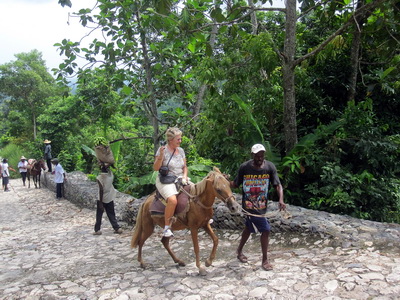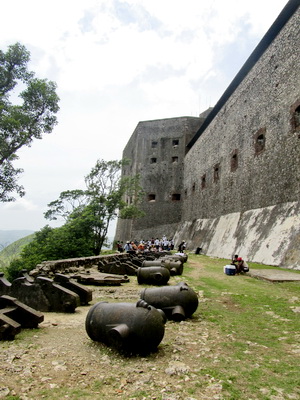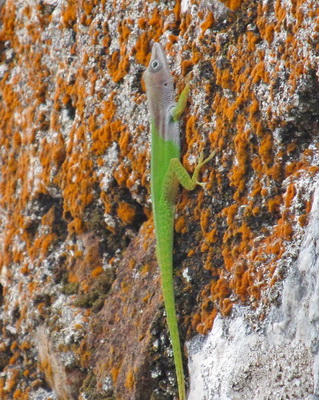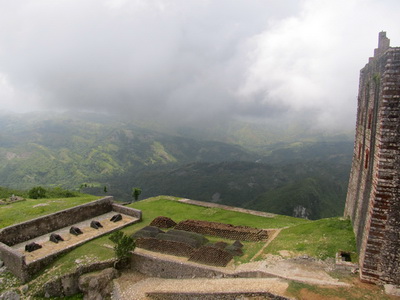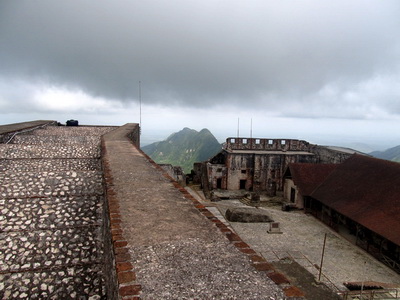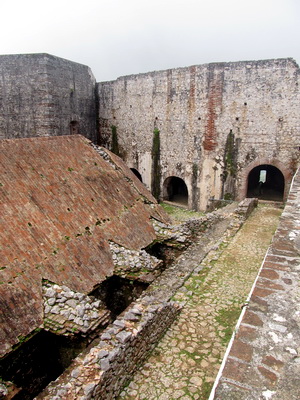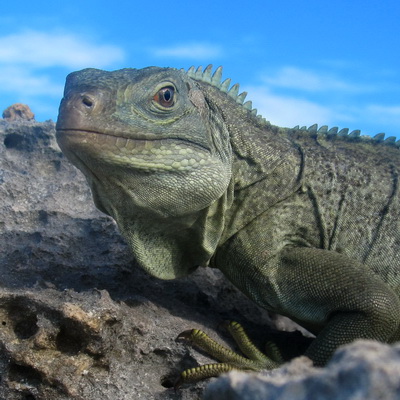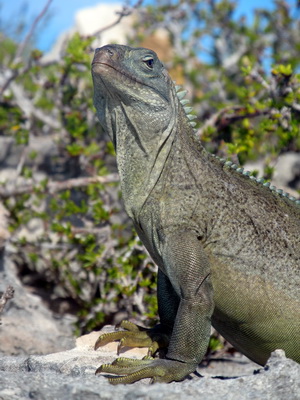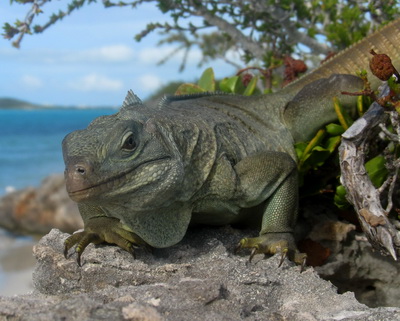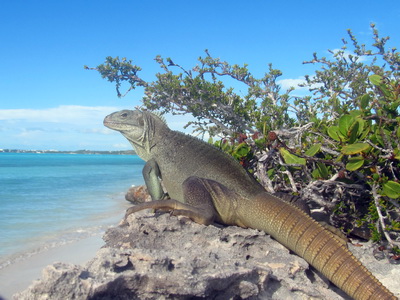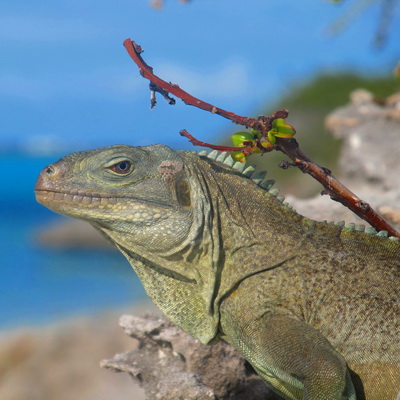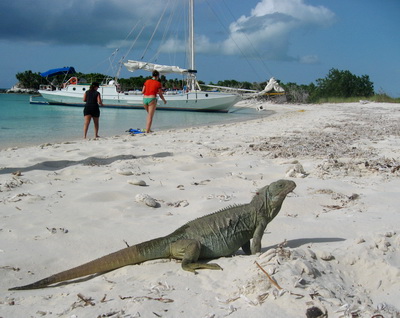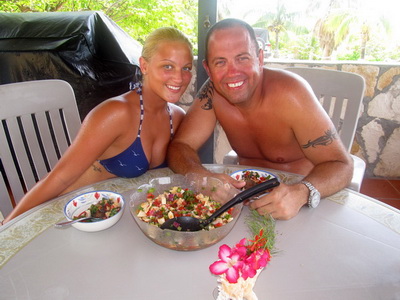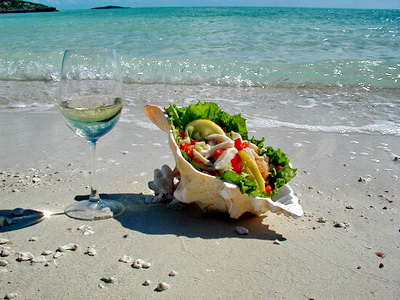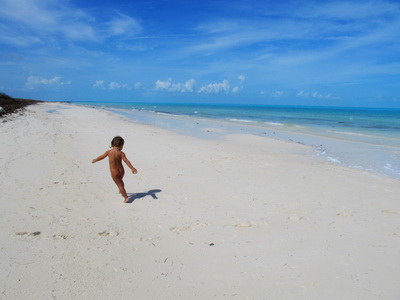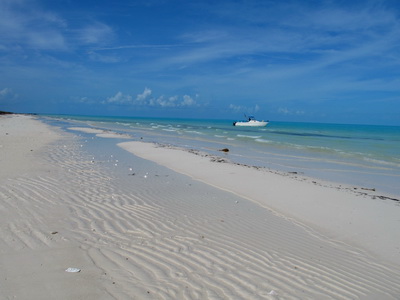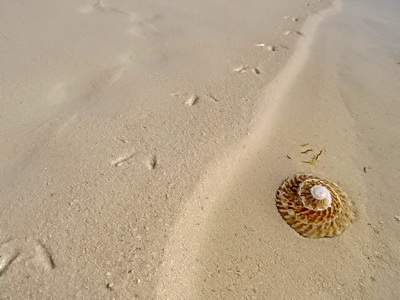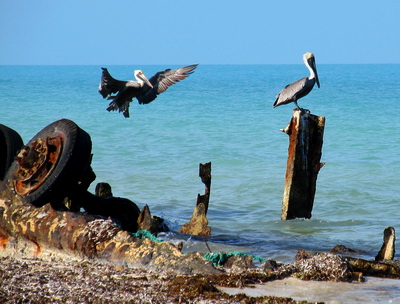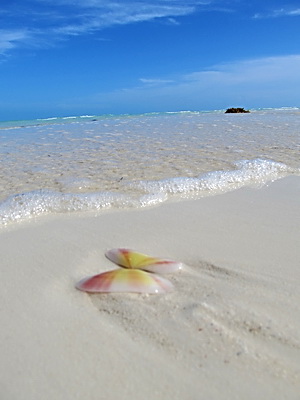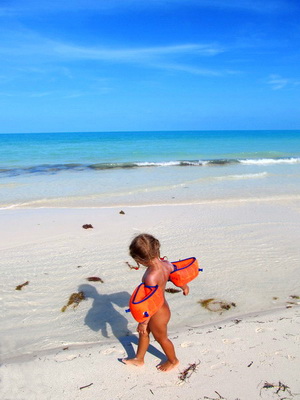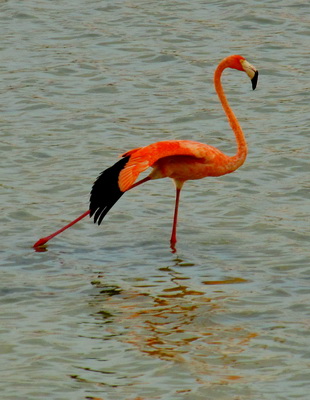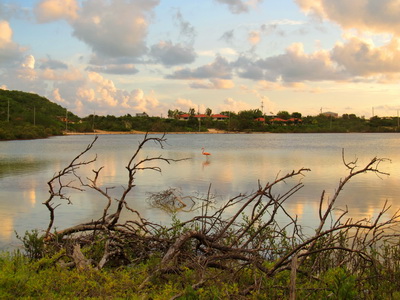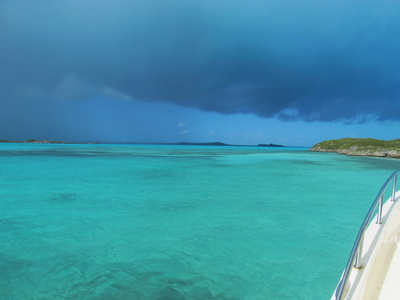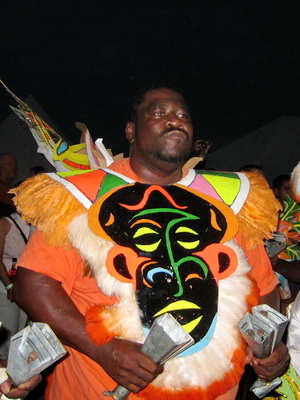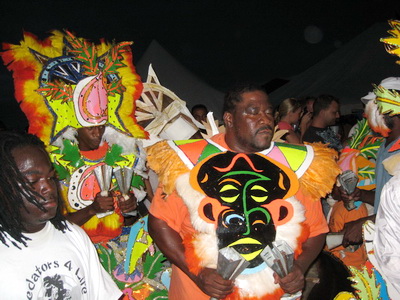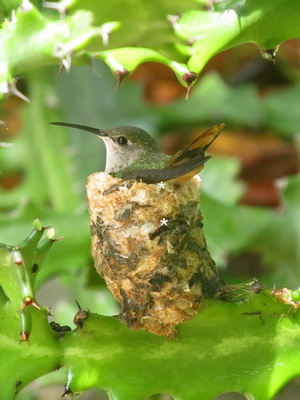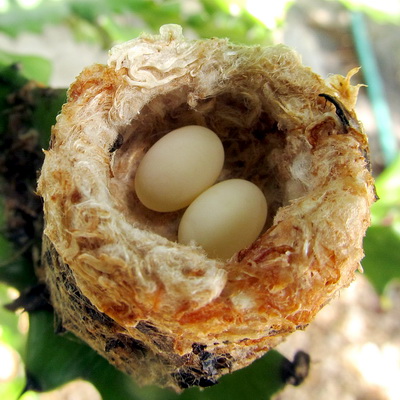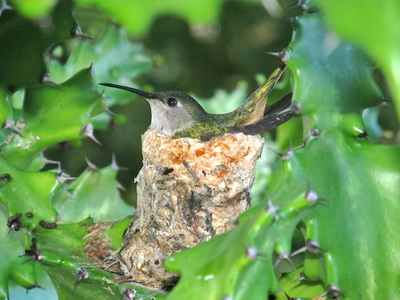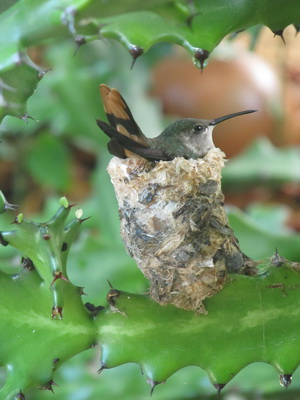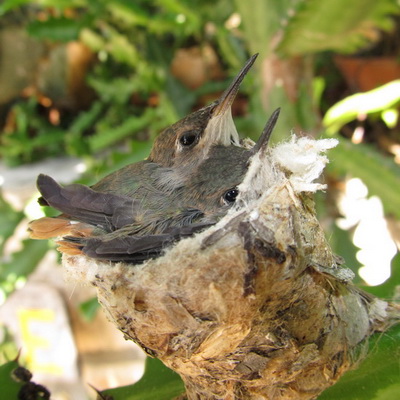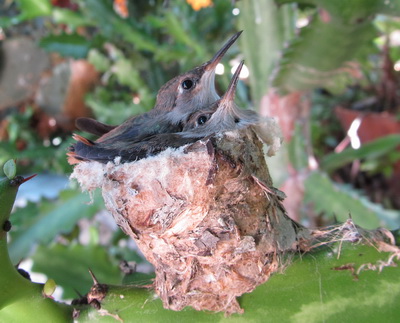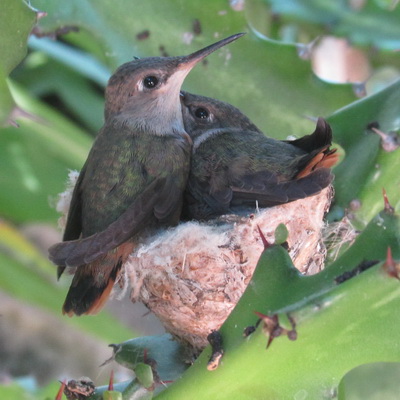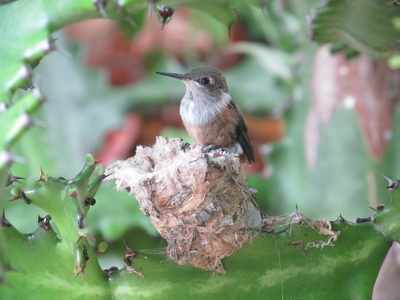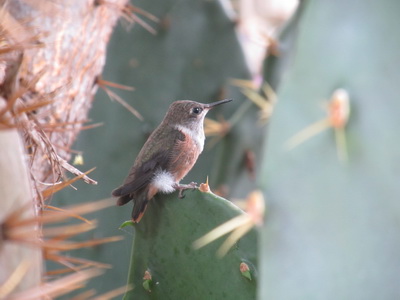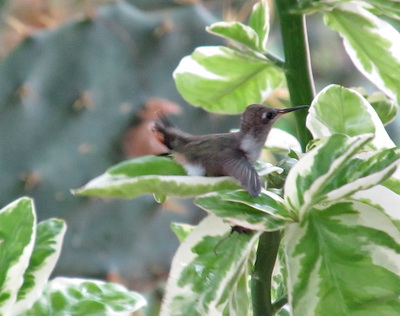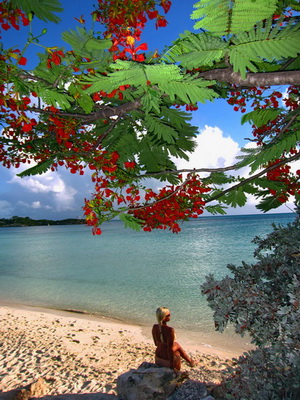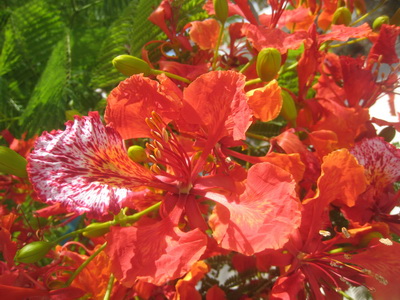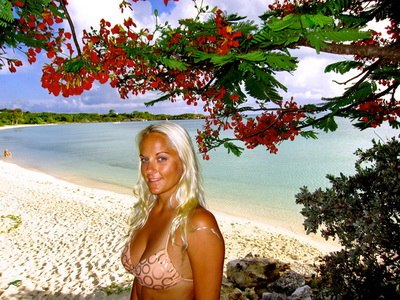Two of us were on horse back, some walked all the way up and we even had someone who ran the route of about seven miles (11 km) from the little town of Milot uphill all the way to the Citadel. The Citadel is a large mountaintop fortress to the south of the city of Cap-Haitien. I can’t tell you how impressive this named ” World Heritage Site” is and it is a must to see and experience. The first portion of the hand cut stone work trail up can be done by car but I chose to go the horse route. From the mid-level parking lot, the second portion must be completed either on horseback or on foot.

Saturday was wash day and all the dwellings had clothes strung out and over bushes drying in the sunshine.
On the way up were small dwellings surrounded by banana and other fruit trees, even coffee beans had been picked off the hillside bushes and lay drying at the side of the trail/road. Since this was a Saturday (our trip was on Sept 24 ) everyone it seemed had done their washing and many had wares to sell to the tourists on their way up to the Citadel.
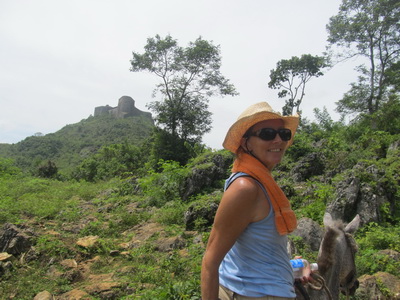
The first sighting of the fortress perched on a high mountain surrounded by what I thought was fairly lush vegetation.
This fortress was built by King Henri Christophe on top of a 3,000-foot mountain called Bonnet-a-l’Eveque, or the Bishop’s Miter, using between 10,000 some 20,000 workers in the years between 1805 and 1820. Around ten percent of them did not survive and there’s a popular Haitian belief that there is human blood in the Citadel’s mortar. It is Haiti’s most revered national symbol and was built to protect the interior of the country in case the French tried to retake the former colony. It is a symbol of the will of the Haitien people to fight for their freedom and understanding the Citadel is crucial to understanding Haiti’s turbulent history as the only nation whose birth was the result of a successful slave rebellion.
The Citadel fortress is said to have some 365 cannons and 10,000 rounds and it took up to three months for a single cannon to be moved from the coast and up the mountain to the fortress. On a tour of this awesome stone structure we saw a room filled with more cannon balls in addition to the piled up mounds of cannon balls shown in the photo above.
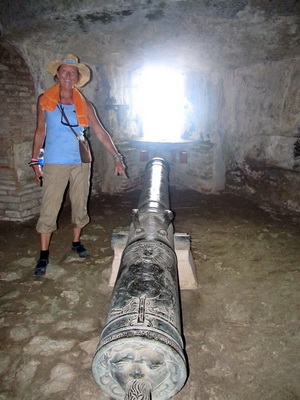
An impressively decorated cannon faces the stone openings where cannons were positioned to defend the fortress from invaders.
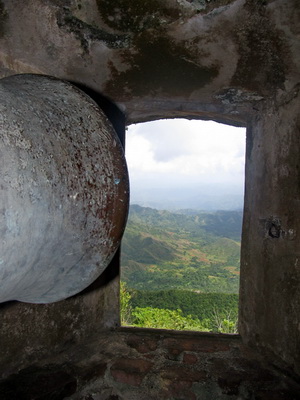
Opening in the solid fortification walls showing the mountain greenery below with the mouth of the cannon.
As there was no inner spring or water source, large amounts of rain water were gathered in 8 huge cisterns, to supply the garrison and inhabitants of the fortress for a whole years’ time.
The Poudrière exploded in 1818, killing Prince Noël, the kings son-in-law and Citadel’s commander.
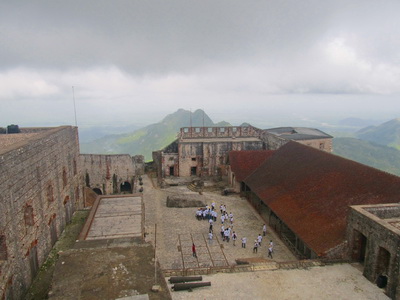
Around the inner court were the crew's quarters, the kitchens and the storerooms, each of these 50 feet deep.
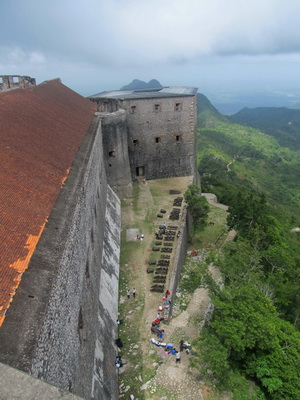
It's a long way down..........no barriers or anything so we had to be careful and not go close to any edges.
And time to head down the mountain and leave this wonderful place. I took over 850 photos and everywhere I turned there was a picture to take. The people were friendly and yes, the vendors will try to sell you a painting, a necklace, a hat or some other ware. I rode my horse down the winding road making one last stop at the Sans-Souci Palace and a group photo.
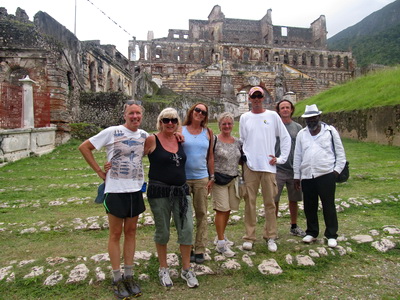
The Palace of Sans-Souci was the royal residence of King Henri I (better known as Henri Christophe) of Haiti
What a fabulous day we had here at the Citadel and hopefully there will be another occasion to return. I’m hoping to post a little more of this really all too brief visit that will include some photos of Cap Haitien and the Cormier Plage Hotel.
Marta
http://www.harbourclubvillas.com

